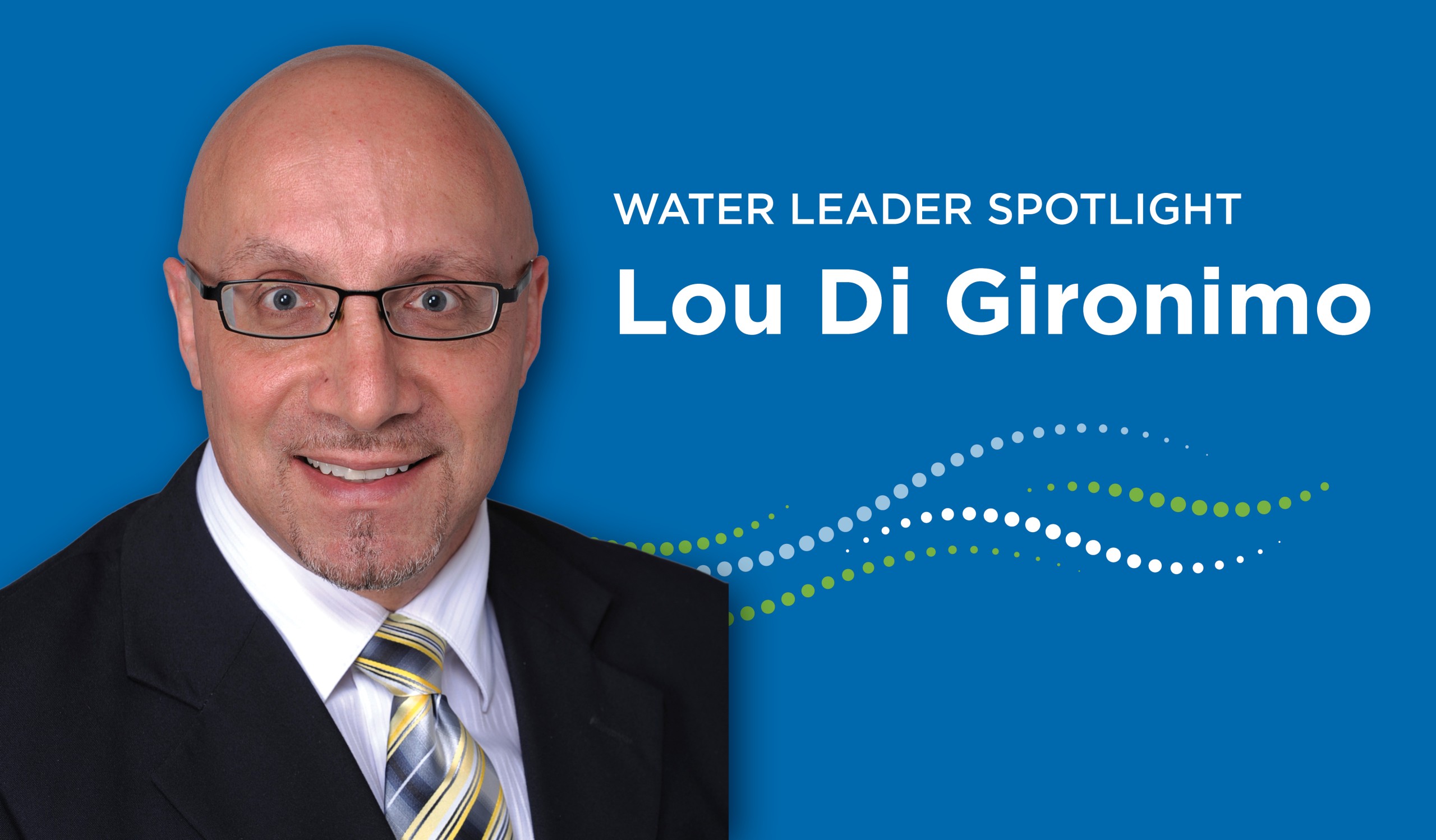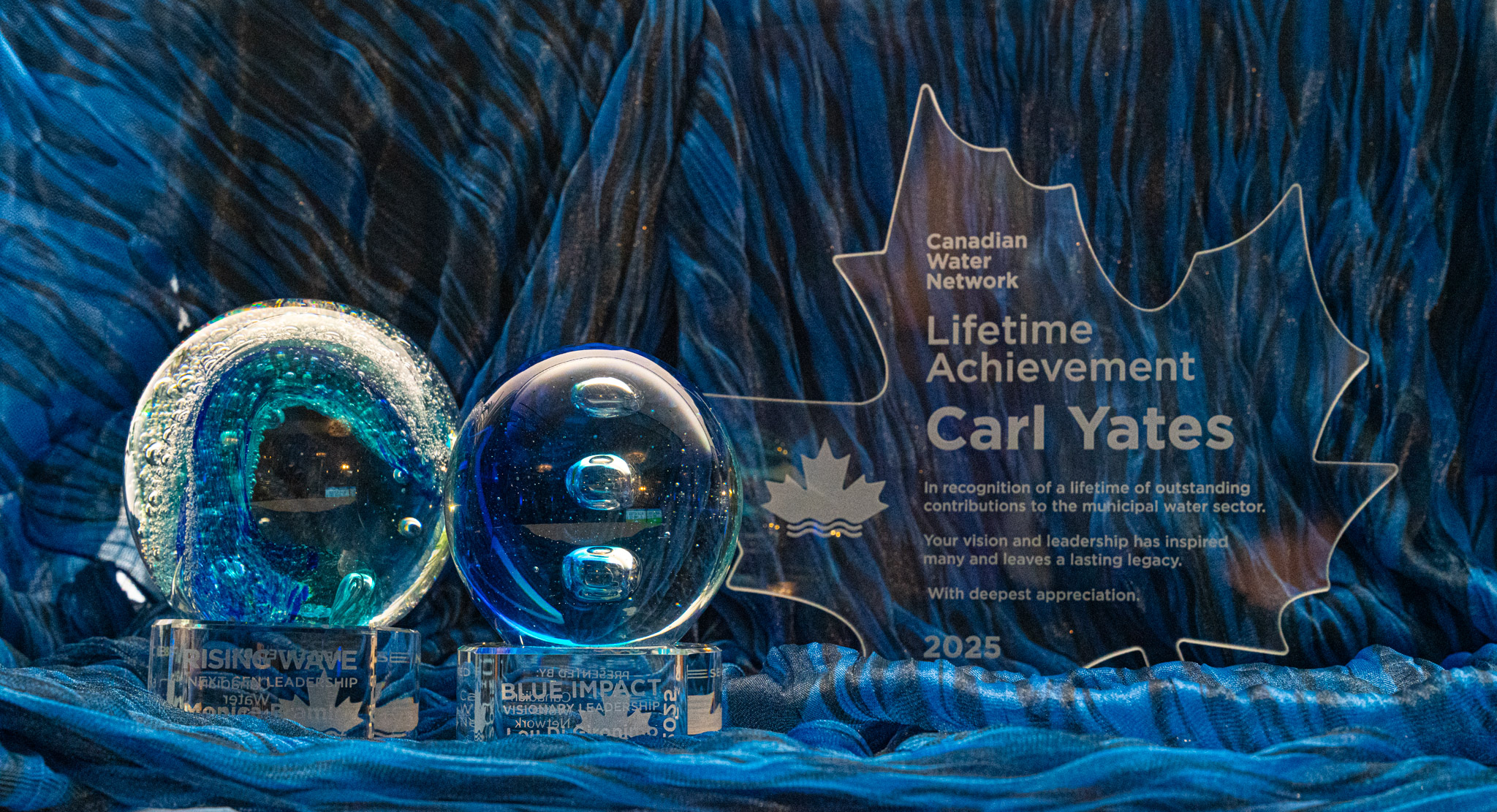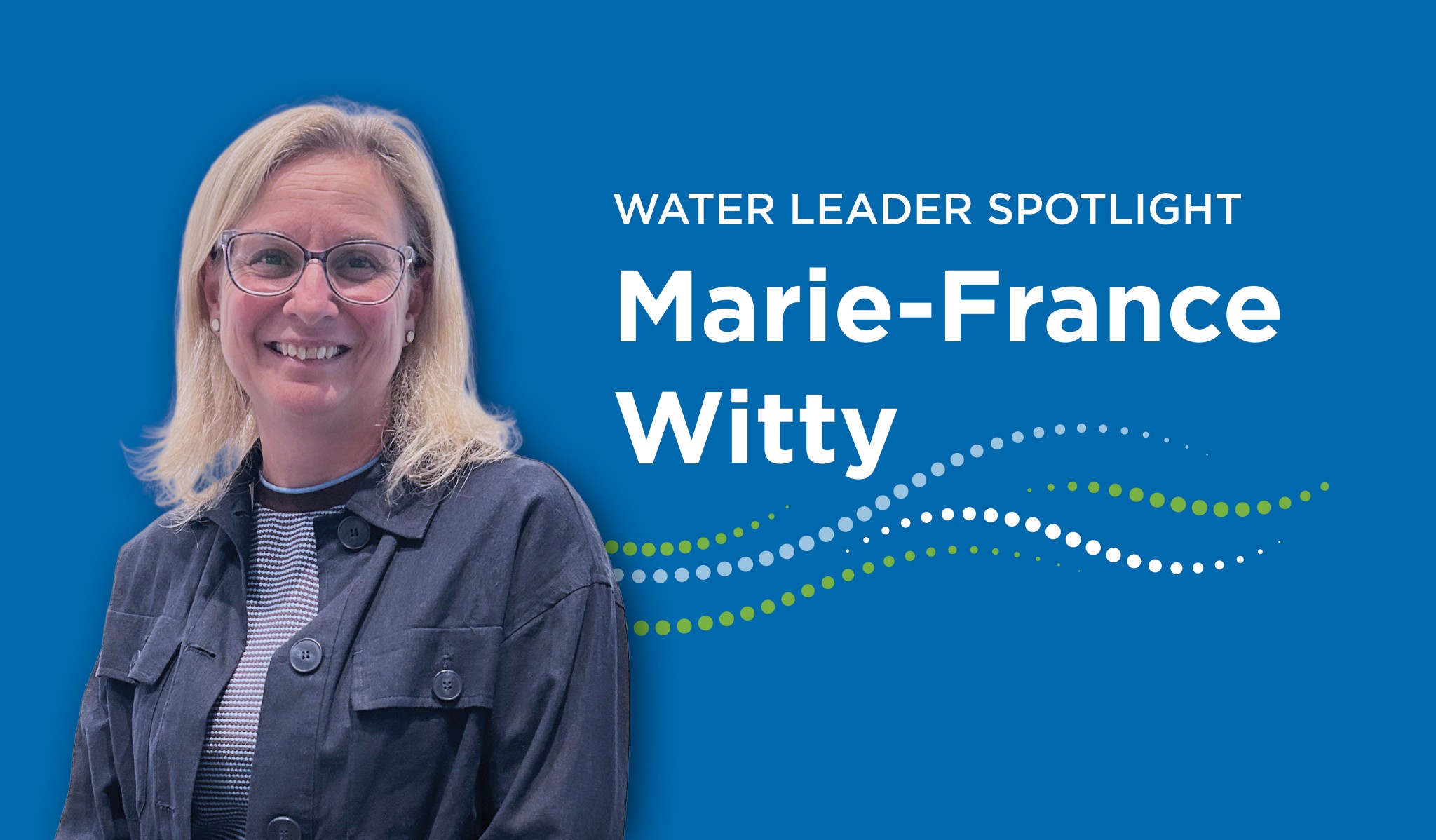Water Leader Spotlight – Lou Di Gironimo
March 17, 2025
CWN’s quarterly newsletter with the latest news, insights and thought leadership.

Sandra Cooke, CWN’s director of communities and climate, interviewed Lou Di Gironimo, who will moderate the Blue Cities session, New Finance and Investment Strategies in an Affordability-Challenged Landscape.
Lou is general manager at Toronto Water — a role he’s held for 20 years.
Can you describe what led you to choose a career in municipal water? What has your career path looked like?
I didn’t plan to go into water… I like to joke that I “fell into the water.” After graduating as an applied geographer, I worked in private land development, mostly subdivision planning and property management. Next, I moved over to the province to Ontario Development Corporation (ODC), which focused on industrial and research technology parks. In those early years, in both the private and public sectors, the need for infrastructure growth kept coming up time and time again. This led me to an opportunity to join Ontario Clean Water Agency (OCWA) during the agency’s formation. I was hired to assist with OCWA’s largest clients (regional municipalities) because of my background in real estate and understanding of municipal infrastructure servicing issues. My role was to win contracts and help OCWA provide value to municipalities. I had to learn the water business, and after winning a major contract, I was “bit by the water operations bug.”
Who has been most influential in your career?
There have been a number of people at various points that have been extremely influential during my career. While I was in my 20s, a colleague in the private sector became a mentor and helped build my confidence. I still talk to him two or three times (or more) a year, just to touch base. The person who initially hired me at the ODC (and later brought me to OCWA) was also influential in my career development. Sheila Willis, the president of OCWA in the late 1990s and 2000, was a champion and provided opportunities to advance into senior management, despite my being the youngest person on the management team at the time.
What has been your proudest achievement in municipal water management? How did it contribute to the organization?
Winning the big contract for OCWA initially hooked me into the water sector. I will always remember it fondly. This early accomplishment was the largest contracting-out situation in North America at the time.
During my current leadership role at the City, I have been very invested in ensuring a strong financial foundation for Toronto Water. I am very proud of getting buy-in from City Council to continually raise water rates over a period of about 13 years to ensure sufficient funding for the capital program, and to maintain a sustainable pay-as-you-go model without incurring debt on the water side of the municipality. I, and my team, worked closely with City Council to secure above-inflationary increases year-over-year. A lot of teamwork went into this.
My personal goal was to achieve unanimous City Council support and eventually, budget approval by consent. This was realized, and we were able to do it because of the strong team we had — we delivered on promises and demonstrated where the money was going.
What is one positive change you’ve observed during your career and what is an emerging trend you think water managers should look out for?
The one positive change I’ve observed in the water industry is the increased use of technology and data, and how this shift has made us much more efficient. Technology has transformed treatment plants from manual labour environments to places that use sensors and other technologies. Initially, there was resistance to adopting computerized work management systems, but now everyone wants these tools. Over the last ten years, things have really changed — the cost of sensors has come down and their efficacy is improving.
I’ve also started to see uptake in the linear side of the business, with sensors becoming more prevalent in pipes, providing data that was previously unavailable. This progress allows my team to anticipate operational decisions based on the data they’re getting. The way I like to explain it is that we’ve been collecting data for quite some time in our water treatment plants, and then right behind it, our wastewater treatment plants. Now is the time for our pipes in the distribution and collection systems to catch up. The big challenge now is how to put your mind to using all of the data, and this is where AI becomes interesting.
All these tools and data are good, but let’s not forget about our people. You must bring people along at the same time as you are making technology investments, because it’s the people who use those new tools who will make better decisions. All the data we’re collecting provides us with the opportunity to work smarter, not harder. One of our directors, who recently retired, always said this and I completely agree with him.
If you had unlimited resources and time, what one initiative would you like to implement as a key priority? If you could have any superpower to advance this work, what would it be?
If I had a superpower, I would choose to accelerate construction. With unlimited resources and time, I would focus on completing all the pieces that are to come together to finish the Don River Waterfront Central Project, which is tied to the wet weather program and combined sewer overflow issue in Toronto. This project includes large tunnels and shafts across the city, an integrated pumping station and a high-rate treatment facility for combined sewer overflows. Although significant progress has been made — including a new landform, outfall and ultraviolet disinfection building — the tunnels, shafts and pumping station are still underway and will take 10 to 15 more years to complete.
I would ensure the capture of combined sewer overflows, reduce contamination and help clean up Toronto’s waterfront. This would also support the redevelopment of the Inner Harbour and Port Lands area, providing residents with confidence that the water on the waterfront is clean. With the ability to speed up construction, I could implement tandem construction projects and complete multiple tunnels simultaneously.
I inherited this project from my predecessors, carried the torch, and made great progress. Although I will pass this project on to the next water leader, if I could, I would speed up construction and pause time — I would love to finish it.
At Blue Cities 2025, what would you like to highlight in your panel discussion and why?
Blue Cities will be a great venue to bring together various perspectives on the infrastructure investment challenges we have and focus on strategies for dealing with the uncertainties that we’ve been seeing in our markets. When we go to tender, we are seeing wild fluctuations and pricing, particularly for large infrastructure assets or complicated tunnelling assets. A few years ago, our initial set of tenders on some projects was pretty close to our estimates. Now we’re seeing wild swings, which makes it problematic from a budgeting and finance perspective.
When prices swing, you then have a lot of hard decisions to make about which infrastructure projects proceed and which projects to delay. So, I am interested in hearing from others on what things we can do to help mitigate the risk of not being able to advance large infrastructure projects due to cost. Can we look at the way we are tendering the work? Are there different models to use in various contract situations? Do we have to take back some of the risk and manage it in a different way?
During the session, let’s highlight how to address significant challenges and keep driving infrastructure plans forward. Panel discussion will focus on navigating challenges such as market uncertainties (wild fluctuations in pricing) when tendering, especially for large plant-related or complicated tunnelling assets. We will also discuss budgeting and financing in the face of these price swings.
How do we finance these large infrastructure projects? At the end of the day, there’s only so much money generated at a certain point in time. So, how do you set the priorities while you’re still growing? In water, we have two big problems — one is fixing and maintaining the old infrastructure that we have, which is quite significant for the City of Toronto, and second, there is the pressure of growth. Building new infrastructure and new capacity in water and wastewater systems in a built-up environment is much more challenging than greenfield development.
Toronto grows in pockets, and it is driven by the market, so it comes down to some educated guesses on where development might go. The challenge is redeveloping these areas with the water, wastewater and storm capacity that is needed to support the development. Combine all these uncertainties, plus now with potential U.S. tariffs. How do we manage moving forward without killing our capital programs and still meet our growth targets?
~
Thank you, Lou, for participating in CWN’s Water Leader Spotlight. To hear more from Lou and other utility leaders about effective finance and investment strategies, register for Blue Cities on May 14-15 in Mississauga.












